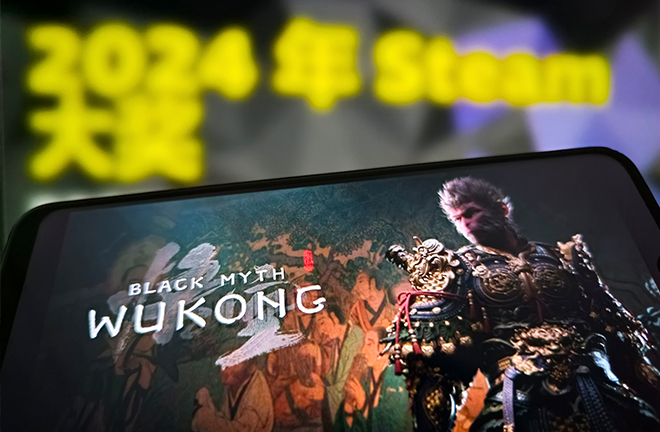Technology stressed for high-quality cultural development

"Black Myth: Wukong" Photo: IC PHOTO
At the second forum on cross-disciplinary innovation in cultural industries and fine traditional Chinese culture, held at Shandong University (SDU) on Jan. 4, 2025, scholars called for efforts to integrate technology into cultural industries to promote the creative transformation and innovative development of fine traditional Chinese culture.
With the rapid progress of science and technology, the interaction between aesthetics and technology is increasingly intertwined, while scientific and technological advancements have also prompted the adaptive development of aesthetics. Xiang Yong, director of the Institute for Cultural Industries at Peking University, noted that technological aesthetics and intelligent creation constitute the dimension along which the integration between culture and technology generates value.
The fusion of culture and technology forms a bidirectional interaction system, in which the value chain—comprising cultural creation, production, communication, and consumption—interacts with the innovation chain, including technological research and development, integration, application, and diffusion, and the two chains empower each other, Xiang explained. This bidirectional interaction system requires producers to possess the ability to tell compelling stories, uncover beauty, harness technology, and transcend traditional frameworks.
New quality productive forces are playing an increasingly prominent and instrumental role in economic and social development, pushing various sectors of the economy and society to a higher-quality development stage at an unprecedented pace. Scholars concurred that these productive forces are likewise essential for promoting the high-quality development of cultural industries in the new era.
The concept of “new quality productive forces” is an original economic and cultural idea that enriches and extends Marxist theory on productive forces. According to Fan Yugang, director of the base for Chinese literary and art criticism at the SDU, the understanding of new quality productive forces should not be confined to economics. This underlines the need for deeper reflection on the dynamics behind the contemporary evolution of Chinese civilization from humanistic perspectives.
The level of productive forces has consistently been an important measure of human progress. Fan emphasized that at this historical juncture, the advancement of human civilization and the modern evolution of Chinese civilization both require the impetus provided by the development of productive forces. The introduction of the concept of new quality productive forces offers a fresh perspective and cultural framework for understanding the contemporary evolution of Chinese civilization.
“The key to the global success of ‘Black Myth: Wukong’ lies in the modern and international interpretation of the Chinese cultural icon ‘Wukong,’ and in the selection, reorganization, and recreation of cultural elements in the Journey to the West, efforts that have constructed a narrative context and action space for in-depth dialogue among diverse cultures,” said Dai Yanchu, executive director of the Public Opinion Research Center at the SDU.
Dai elaborated that intelligent context modeling can not only tailor cultural presentations to audience needs in different cultural contexts, but big data analysis has also enabled timely adjustments to communication strategies, thus delivering the spirit and values of fine traditional Chinese culture to the world in a more inclusive and compelling fashion.
The advent of the artificial general intelligence era has triggered paradigmatic shifts in digital scholarship, ushering in a new age for digital humanities. The integration of digital intelligence with knowledge production and the preservation of civilization requires a profound fusion of the humanities and technology. Lin Fanjun, president of the Shandong Academy of Arts, highlighted that the digitalization of traditional cultural resources is a key aspect of creatively transforming and innovatively developing fine traditional Chinese culture, citing the “Qilu Culture Gene Decoding and Utilization Project” as an example.
This project is a representative initiative of Shandong Province to digitalize local culture and arts. Lin noted that its framework combines cultural, institutional, technological, and industrial logic. By employing strategies such as iconizing cultural resources, genetizing icon codes, digitizing gene labels, and securing digital copyrights, the project aims to digitally empower cultural construction and drive informatization therein, ultimately converting cultural resource advantages into cultural development strengths.
The forum was co-hosted by the School of History and the Institute for Cultural Industries at the SDU.
Edited by CHEN MIRONG
